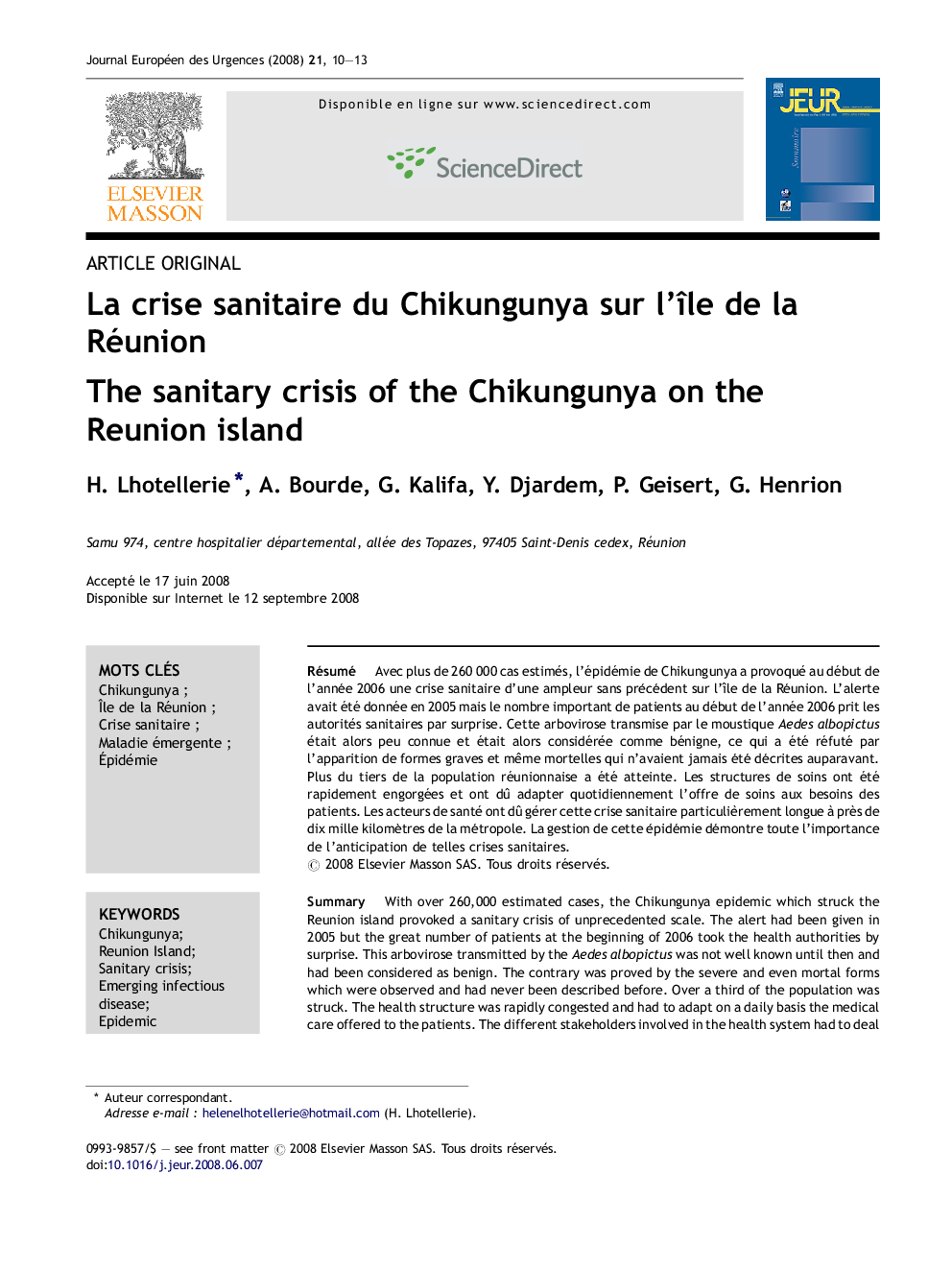| Article ID | Journal | Published Year | Pages | File Type |
|---|---|---|---|---|
| 2765926 | Journal Européen des Urgences | 2008 | 4 Pages |
Abstract
With over 260,000 estimated cases, the Chikungunya epidemic which struck the Reunion island provoked a sanitary crisis of unprecedented scale. The alert had been given in 2005 but the great number of patients at the beginning of 2006 took the health authorities by surprise. This arbovirose transmitted by the Aedes albopictus was not well known until then and had been considered as benign. The contrary was proved by the severe and even mortal forms which were observed and had never been described before. Over a third of the population was struck. The health structure was rapidly congested and had to adapt on a daily basis the medical care offered to the patients. The different stakeholders involved in the health system had to deal with a long sanitary crisis 10,000Â km away from metropolitan France. The management of this epidemic proves the importance of anticipating such health crises.
Related Topics
Health Sciences
Medicine and Dentistry
Anesthesiology and Pain Medicine
Authors
H. Lhotellerie, A. Bourde, G. Kalifa, Y. Djardem, P. Geisert, G. Henrion,
